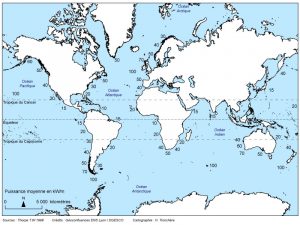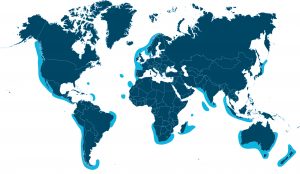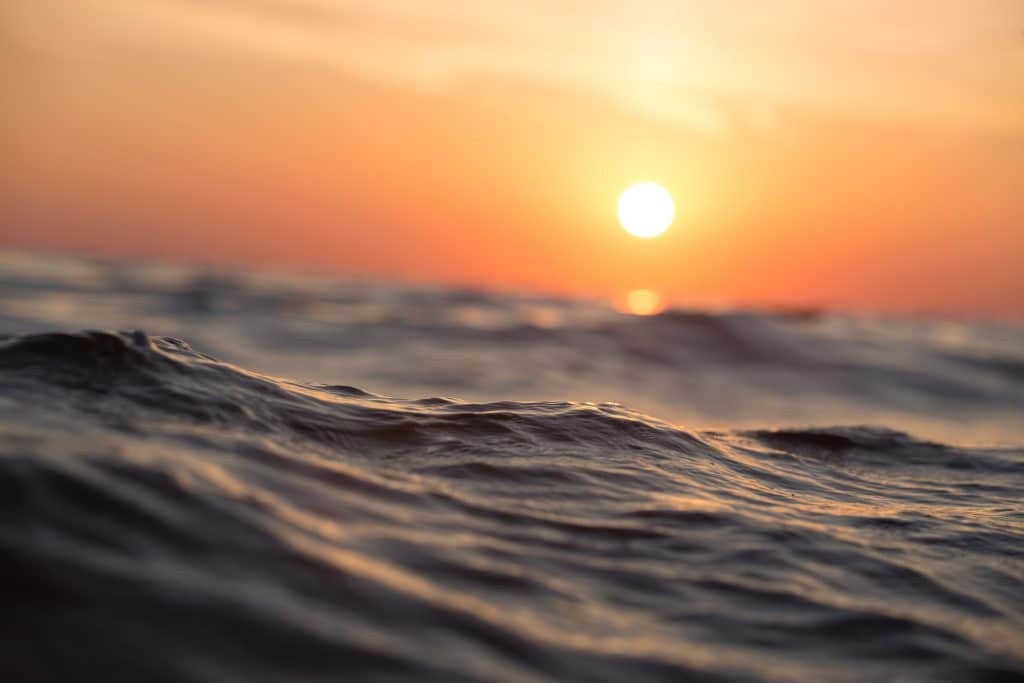Marine energies
Distribution of the world population
In 2010, more than half of the world population lived within 150 km along the 1.6 million km of coastline that border the seas and oceans.
This is a very favorable factor for the installation of coastal energy production since production and consumption have an interest in being as close as possible to each other.
France, in particular, has an exceptionally vast coastal and maritime domain, still largely unexploited, in particular around its ultra-marine territories including the he energy currently comes from petroleum products burdened with a significant additional cost due to remoteness from supply.




Why marine energies?
A majority of consumers are found near the coasts and therefore potentially wave or wind fields.
It is also necessary to provide them with energy without excessive transport which would reduce the quantity delivered.
The power and size of the fields can be adapted to markets and environmental conditions.
Significant synergy already exists between wave and wind power, as well as other marine and industrial technologies (fresh water, aquaculture, hydrogen, etc.).
The project can be regionalized in terms of the essential structures, modules and assembly, thus generating a significant share of local supplies and services, including installation at sea .
The local economy can therefore only directly benefit from this new industry.
End of dependence on imported fossil fuels!
The evolution of the human species is historically dependent on energies. The mastery of natural forces and the discovery of primary sources, from wood first and gradually to oil, have allowed humanity to drastically multiply the only strength it originally had, namely its muscular strength or that of domesticated animals.
The energies, often associated with water, the life blood of humanity, are therefore logically at the source of all industrial development.
Unfortunately, this technological boom finds its limits when the primary resource is finite and non-renewable, such as hydrocarbons and, at the same time, their rampant and polluting use has dramatic consequences for the environment.
Hence the growing interest of the industry for renewable energies, in particular marine energies, which are inexhaustible, clean and less dangerous in their exploitation.
Another important corollary is the distribution of energy on the places of decentralized production and therefore with the minimum possible transport costs, which also feature LOCAL marine energies because of the historical distribution of the populations on the littoral vicinity, as shown above.
The kinetic energy of the oceans is immense and renewable with a very considerable and exploitable global potential.
The World Energy Council (*) has estimated at 10% the theoretical amount of annual global electricity demand could be covered by wave energy
(including 40 TWh / year for metropolitan France alone).

